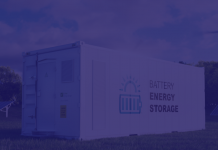 As the first round of demand response capacity auctions close, Enernoc’s Pete Holzaepfel argues in this sponsored post that the Transitional Arrangements, while not perfect, are an opportunity for UK firms.
As the first round of demand response capacity auctions close, Enernoc’s Pete Holzaepfel argues in this sponsored post that the Transitional Arrangements, while not perfect, are an opportunity for UK firms.
The hotly-debated Transitional Arrangements (TA) begin this October, and will continue for the next two years as they lead us into the Capacity Market’s 2018 launch. The TA are identical to the Capacity Market, except that the TA are reserved only for demand side response (DSR) and small-scale generation. They are practice for the Capacity Market, if you will.
The auction for the 2016/17 TA delivery year closed this week, prompting many consumers to wonder how the TA will impact their DSR participation as a whole. We’ve got your answer: it depends.
Is TA participation a trap?
Some may argue that the TA are a trap for DSR. We certainly recognise the flaws in their design, but we believe the TA present a tradeoff, not a trap.
The tradeoff: if you choose to participate in the TA, then you cannot enrol in the first three delivery years of the Capacity Market (i.e., 2018-21) with capacity procured in the “base” auctions. The base auctions take place four years prior (T-4) to each delivery year.
Instead, TA participants can only use capacity procured in the incremental auction for each delivery year, which take place one year prior (T-1) to the relevant delivery year. While there is no good rationale for this market design (we fought hard to amend it), the rule remains in place. But, fear not. You’re not trapped.
What makes TA participation a good option for me?
For those businesses that are ready to start earning DSR revenue this year, participating in the TA is likely your best bet.
There are risks that the T-1 auctions for the first three years of the Capacity Market may result in lower prices – and therefore lower payments to participants – than the T-4 auctions to date, but it’s impossible to know at this point.
In fact, there are some indications that the T-1 auction for 2018/19 could result in significantly higher prices (and thus higher payments) than the T-4 auction for the same delivery year. In addition, capacity prices in the first two T-4 auctions for 2018/19 and 2019/20 weren’t exactly sky high (£19.40 and £18.00 per kW year, respectively). It would be hard to imagine that the T-1 auctions for the same delivery years would be much lower. So what are you really waiting for?
If you’re not ready for the TA…
No worries. You can wait to begin participating in the first delivery year of the Capacity Market in 2018 with T-4 or T-1 auction capacity. At that point, you will know the capacity prices for the following four years given that the T-4 auctions through 2022 will have occurred. And, you won’t bear any risk relative to the T-1 auctions.
Unsure Of what to do?
The proper DSR partner should be able to consult you on these tradeoffs and help determine which route of participation provides you the most benefit with the least amount of risk. DSR partners clearing capacity in all auctions (TA, T-4, T-1) are best suited to help you execute on that strategy.
As for us, we cleared 65MW in this week’s auction, adding to the 250MW we cleared in the 2019/20 T-4 auction last month.
Want to learn more? Please join us for a complimentary webinar about the Transitional Arrangements on Wednesday, 3rd February, at 2:00 p.m. Register here.
Click here to see if you qualify for a free subscription to the print edition or to renew.
Follow us at @EnergystMedia. For regular bulletins, sign up for the free newsletter.



